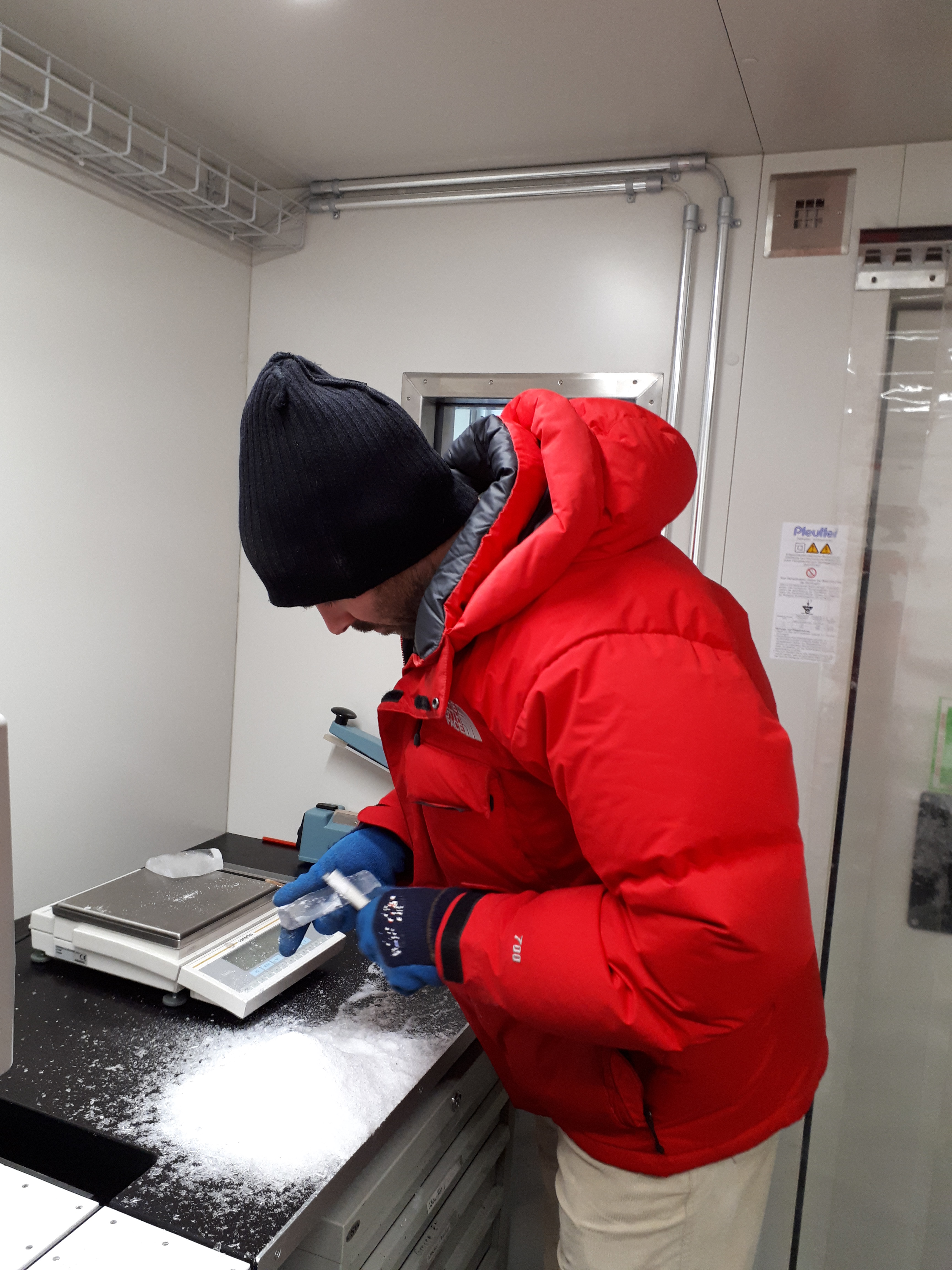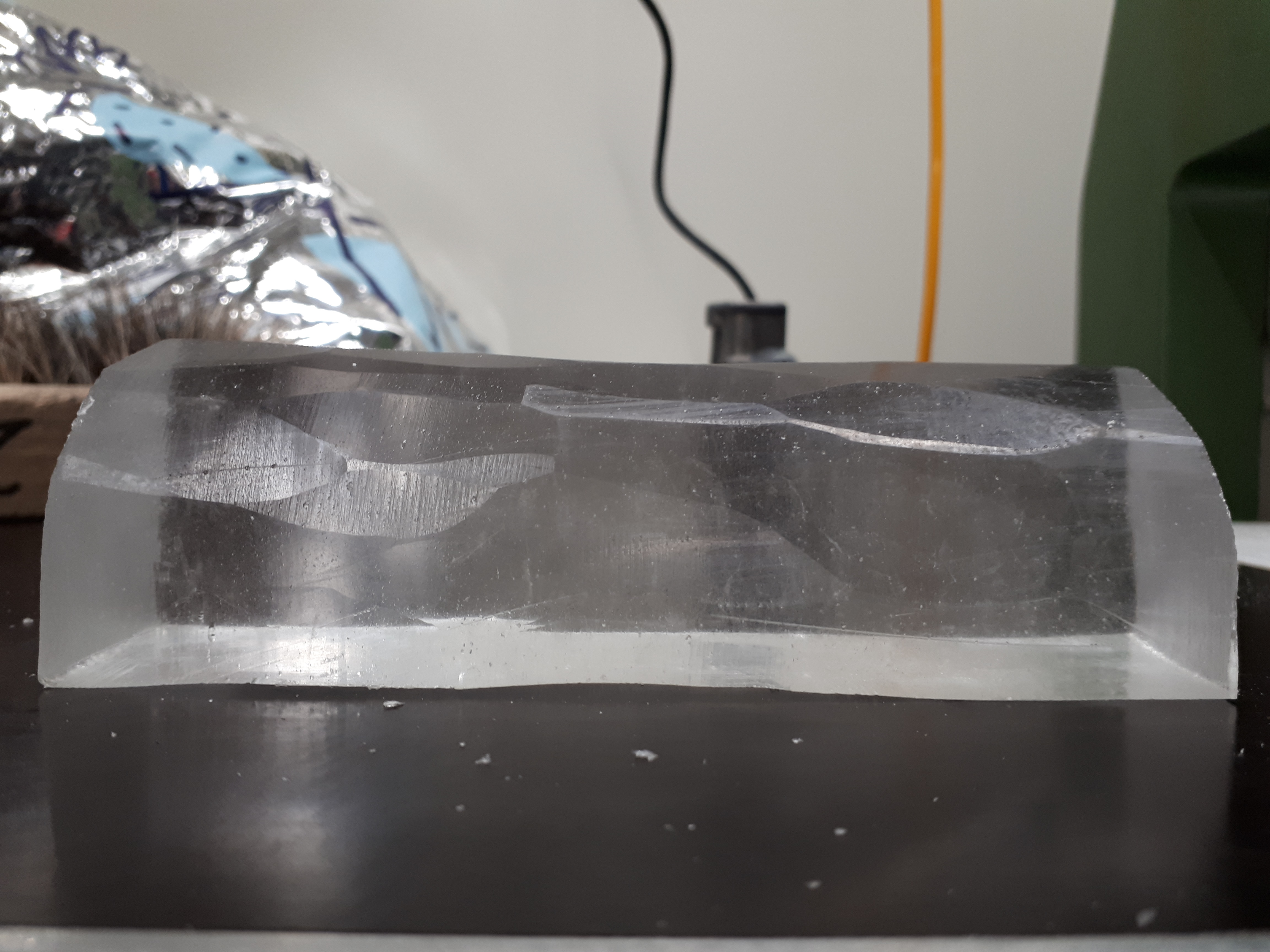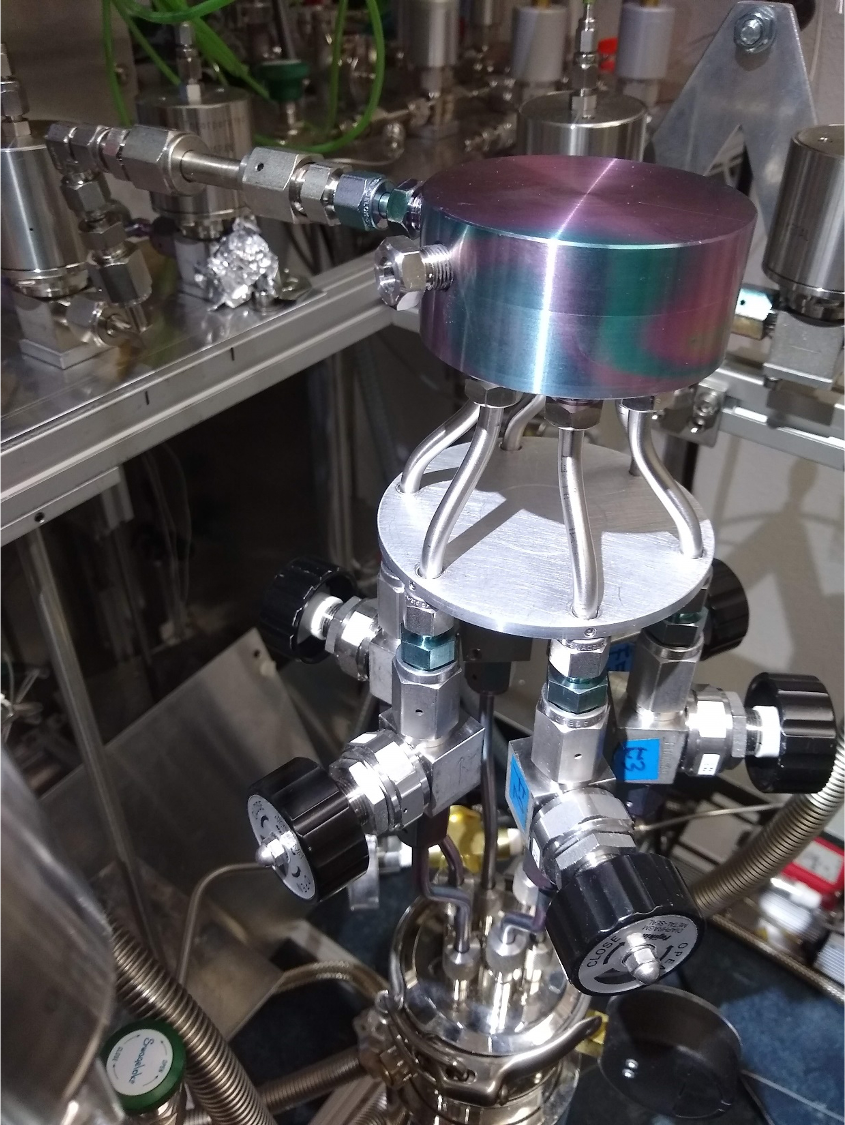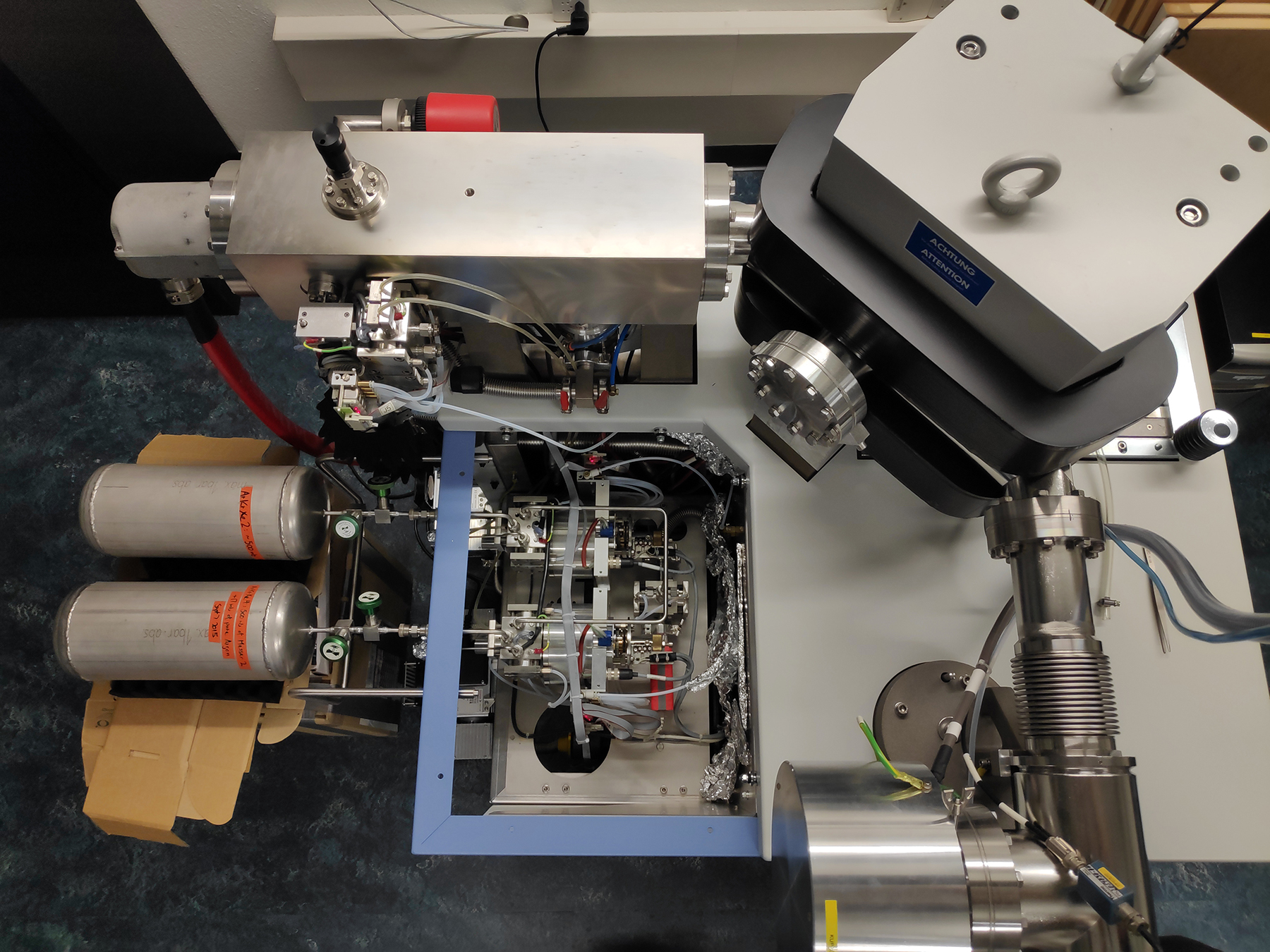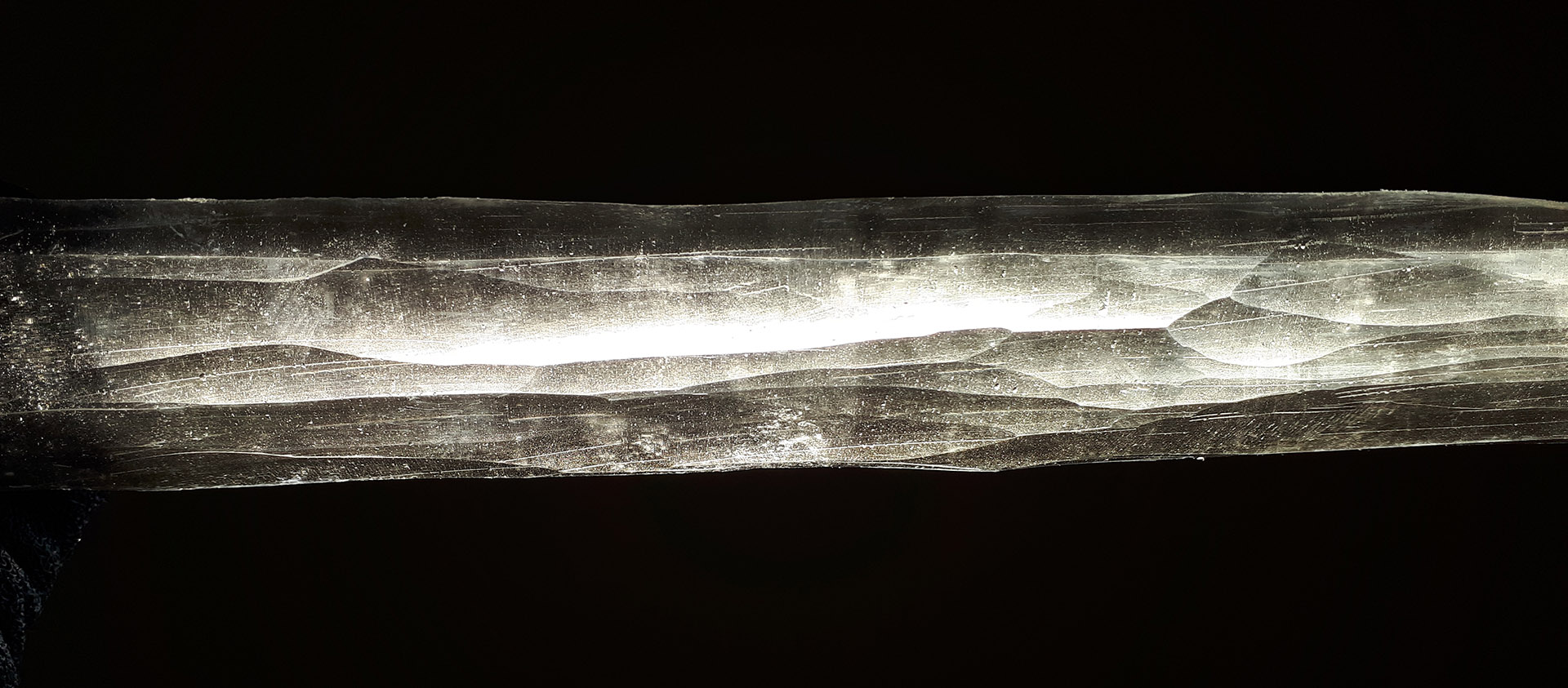
“To understand how the climate system’s heat balance is changing, we have to understand the ocean first and foremost.”
SUSTAINABILITY
Record for the reconstruction of historical ocean temperatures
For the first time, researchers of the Oeschger Centre for Climate Change Research at the University of Bern used data from Antarctic ice cores to reconstruct global mean ocean temperatures for selected periods of time over the past 700'000 years. The insights this provided will help improve our understanding of the climate system.
Bern’s ice core researchers were already able to demonstrate in 2008 how the concentration of CO2 in the atmosphere has changed over the past 800,000 years. The group led by Bernese climate researcher Hubertus Fischer is now using that same ice core from the Antarctic to show the maximum and minimum values of the range of mean ocean temperature fluctuations over the past 700,000 years. The results of the reconstruction were published in the April 2021 issue of “Climate of the Past”. The study’s key findings: As already suggested by syntheses of deep water temperatures from marine sediments, mean ocean temperatures have remained very similar over the last seven ice ages, averaging about 3.3 °C colder than the pre-industrial reference period. However, despite similar amounts of sunshine, ocean temperatures during the warm periods 450,000 years ago were much colder and CO2 concentrations were lower than during our current warm period. New measurements show that ocean temperature is also shaped by changes in ocean circulation. Referred to as a global circulation of deep waters, this has a significant impact on heat storage in the ocean.
“To understand how the climate system’s heat balance is changing,” says Hubertus Fischer, “we have to understand the ocean first and foremost.” For example, 93 percent of the additional heat that humans accumulate by increasing greenhouse gases is currently stored in the ocean rather than in the atmosphere That means without the ocean’s ability to absorb heat, the temperature increase measured on land that is attributable to human-induced climate change would be significantly higher. Since the oceans account for a much greater mass than the atmosphere, the temperature changes currently being measured in the ocean are very small.
Did you know?
“93 percent of the additional heat that humans accumulate by increasing greenhouse gases is currently stored in the ocean rather than in the atmosphere. Without the ocean’s ability to absorb heat, the temperature increase measured on land that is attributable to human-induced climate change would be significantly higher.”
Measurements on a few ice samples are sufficient
An international project that goes by the name of ARGO demonstrates just how relevant data from the ocean is with respect to climate research. Since 2000, this project has been using a mobile observation system to perform continuous temperature measurements of the world’s oceans at depths of up to 2,000 meters, for example. To do that, it has roughly 4,000 drifting buoys spread out across the different oceans. That makes the approach embraced by Bern’s researchers all the more astonishing in comparison: “We only need a single polar ice sample for our mean ocean temperature measurement,” explains Hubertus Fischer. “Of course, we’re nowhere close to achieving the accuracy of ARGO, but on the other hand, we can also look quite far back into the past.” It’s not the frozen ocean water that’s being studied, however, rather the air bubbles trapped in Antarctica’s glacier ice. Specifically: the noble gases argon, krypton, xenon and molecular nitrogen. While the majority of these gases are contained in the atmosphere, just a small fraction is dissolved in the ocean. How well each gas is dissolved in seawater depends on the ocean’s temperature. That means the changing ratio of these gases in the ice samples can be used to reconstruct past mean ocean temperatures.
Bernese researchers perform high-precision gas measurements
“This method hinges on high-precision measurements performed using a dynamic mass spectrometer,” points out Hubertus Fischer, “which were made possible by the enormous efforts of several doctoral students and postdocs involved in the publication.” Other crucial elements include processing and measurement methods developed in Bern as part of the MATRICs project funded by the European Research Council (ERC). In Bern, past ocean temperatures are determined to within 0.4 °C. This precision makes it possible to plot the climatic ups and downs of the past, especially given the fact that the difference in mean ocean temperature between the ice age and the warm phases over the past 700,000 years has been about 3 °C. So far, apart from the laboratory in Bern, the only institution in the world to perform measurements of this nature has been the Scripps Institute of Oceanography in San Diego, USA; Bernese researchers have been collaborating closely with the Institute.
